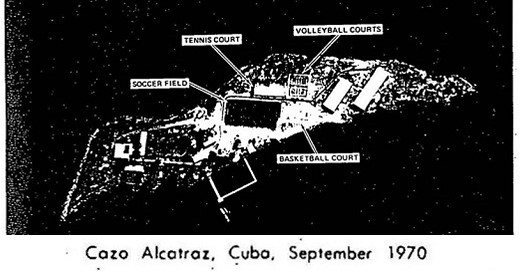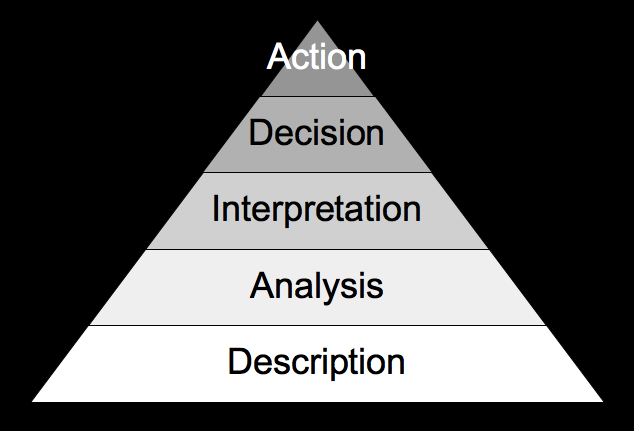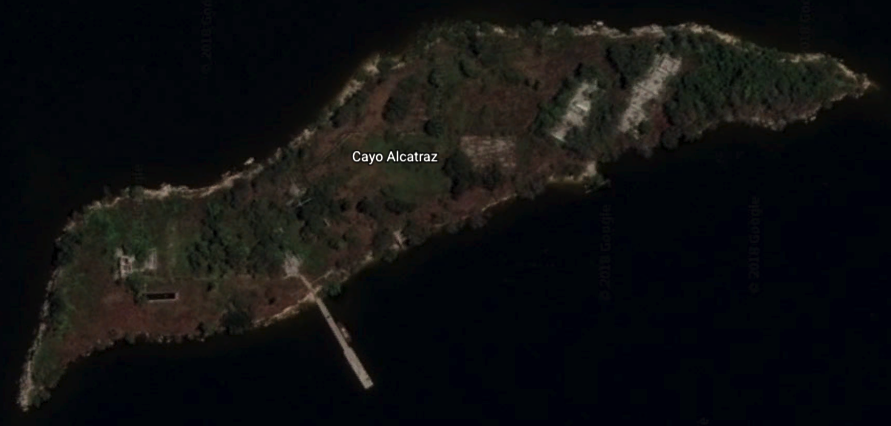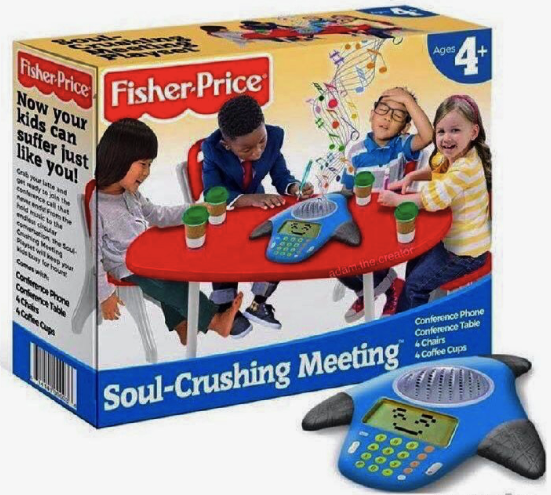Thinking
Fast Ideas #13 Price, cost and value
01/12/19 - 15:22
Fast Ideas #8 Go/no-Go decision
27/10/19 - 13:58
The case of the missing diamond
21/04/19 - 14:37

Can you see it? The missing diamond? If you look really hard I think you will be able to spot it! The clue is in the text at the bottom of the photograph. If you can't work it out, I will drop some clues in my post and give you the answer at the end of the article.
Visualisation tools
I have written previously about the belief that capability with one particular tool leads to better performance. The pitch for visualisation tools like PowerBi and Tableau is that seeing the data graphically will reveal patterns and trends that we simply cannot detect when looking at numbers. And through a process known as voodoo we will therefore make better decisions. Actually, that is unfair. Predictive analytics is based upon identifying relationships between two sets of variables:
- explanatory variables
- predicted variables
Analysis of the explanatory variables is used to predict outcomes in the predicted variables. I tried to explore how that works in practice in this post. Clearly the accuracy of the prediction will be driven in part by the quality of data and in part by the assumptions about what really "explains" variation in the data set. My contention is that we need to acknowledge the impact of external variables that we may not be able to measure easily.

The point is that decision making is not a simple linear process like this; Facts + analysis = better choices. The next time you review a procurement strategy, consider what proportion of the strategy document is describing the situation, how much is analysis, and what is the interpretation of the output of the analysis.
Dino Brugioni
For example, in early autumn 1970 a CIA analyst named Dino Brugioni looked at the photograph above (taken by a US U2 spy plane) of construction activity on an island called Cayo Alcatraz near the port of Cienfuegos in Cuba. Description would be that it is a photograph of an island. Analysis revealed the presence of multiple sports facilities on a relatively small island.
Interpretation is where things get interesting. For there to be so many sports facilities, there must have been lots of construction workers. To play soccer you need at least 22 players, so it was reasonable to assume at least 20 - 30 (relatively young) men were stationed on the island. What were they building? Was it connected to the jetty on the south side of the island? After all, Cienfuegos is a port. It was Brugioni's prediction that the photograph revealed something important, and within days the photograph was on National Security Advisor Henry Kissinger's desk, and a few days after that Kissinger persuaded President Nixon to make the decision to take action. Triggered by this photograph!
The point is that when we analyse spend data, or supply markets, we may well describe the data, and even use tools of analysis. But we also leverage judgement and experience to reach a decision. Tableau or PowerBI do not transform decision making by themselves. Interpretation requires knowledge, experience and wisdom. And there is no point looking backwards in time unless we use that knowledge to make better decisions about what to do in the future.
The explanation
In the case of the photograph, Brugioni's analysis was that there were lots of sports facilities present on a small island, apart from a facility for the most popular sport in Cuba, beisbol. Why would there be a soccer pitch, but no baseball diamond? Why would the construction workers build permanent sports facilities? Because the base was being built by Russians. Cubans play baseball, Russians play soccer. Brugioni predicted that the facility would become a permanent Russian naval base, and escalated the advice immediately. Nixon's intervention stopped the construction of the Russian naval base, and it was never finished. The case of the missing diamond!
So what?
Cool story, bro, but so what? The 'so what' is:
When you analyse situations, there may not be a missing diamond, but there will be some facts staring you in the face and some facts missing.
Analysis is better than simple description, but analysis needs interpretation to make decisions
When analysing a situation, it is important to try to be objective about what is happening, and what is not happening
Interpretation involves synthesising multiple information sources to understand the 'what' and the 'why'
In this case, inductive reasoning is needed to 'join the dots' using information not present in the photograph
In many cases we will not have all the data we would like to have to make a decision
Experience, insight, hunches and 'wisdom' are part of the voodoo involved in making decisions in uncertain situations
Whether a spend analysis or a market review, we only look backwards in time to better inform our future choices
Our decisions are future-focused, and whether developing a category strategy or limiting the threat of nuclear war, if there is no action, there is no point
Visualisation tools are like the U2 spy photograph. They give us a new way at looking at a situation. But no tool can reveal what isn't there, and we all need to be as insightful as Dino.
Here is the island today, courtesy of Google Earth. Nature has reclaimed the island!

SWOT= Stupid waste of time
21/04/19 - 12:06

It is easy to criticise the use of four-box models. "Not another four-box model!" the team groan. But whether Ansoff's Matrix in marketing, or the BCG's Market Share / Market Growth Matrix in strategy or our beloved Kraljic's Matrix in procurement, they do help create repeatable and transparent decisions.
Well, some do.
SWOT may have a place in strategy session to engage the team after lunch, but does it have an application as an option evaluation tool?
SWOT= Stupid Waste of Time
One four box model that warrants critical analysis is SWOT Analysis. I am in the process of writing a category strategy for a client, and the governance requires that I review each potential option using a SWOT Analysis. No other four box model, not even the procurement community's two most favourite models (which I have used anyway). No, just SWOT
SWOT= Stupendous Waste of Time
Let's apply the tool to a fictitious procurement project and imagine that:
- the requirement is a one-off project
- the project is complex and has some uncertainty
- the client is a relatively small customer in the market
- larger suppliers may not be interested
- smaller suppliers are less likely to be capable to deal with the complexity
Let's review two project dimensions using the SWOT framework:
Project scale
- Project scale is a strength because the client is unencumbered by historical baggage and can start afresh
- This is a weakness because the client has no recurring demand to leverage
- This is a threat because suppliers may not be motivated to participate as there is no ongoing business
- This is an opportunity because suppliers can potential build a relationship with a new client
Project complexity
- Project complexity is a strength because it means the client can access external expertise to help reduce the complexity
- This is a weakness because the client has to rely on external consultants to support decision-making
- This is a threat because if the larger suppliers do not participate the use of local suppliers may increase complexity
- This is an opportunity because working with local suppliers will develop their capability
I could go on, but I think you get the point. You can define project dimensions in whatever way that you choose. Or rather, whatever way the person with the marker pen chooses.
SWOT= Strategic Waste of Time
The criticisms of SWOT are as follows:
- There is no rationale as to how project dimensions should be classified
- The identification of weaknesses depends upon the level of insight that the team have about their relative capability
- The same dimension can be classified in a variety of ways, which makes the choice of perspective a subjective choice
- The logic that strengths and weaknesses are internal and threats and opportunities external classifies the source, not the impact
- The tool is a qualitative tool that gives the illusion of 'analysis' but provides no objective or repeatable methodology
- The use of the tool engages the team in a participative way, raising expectations that the tool will point to the next steps
- In fact, SWOT consumes time and raises expectations but provides no indication as to what to do next
- The idea that you 'leverage the strengths to take advantage of the opportunities' is only as valid as the choice of strengths and opportunities
- Once the flip charts have been written up, and the SWOT analysis recorded, the next steps are no clearer than before the 'analysis'
- What has changed is that expectations have been raised that the team have 'addressed the problem'. In fact, they have admired the problem
Significant Waste of Time
If you think I'm being harsh, read this, or this, or this. And if a consultant recommends that you use SWOT as part of category planning, ask them to provide you with a worked example showing exactly how the analysis leads to a decision. Ask them to write guidelines on how to use the output of the 'analysis' to decide what to do next
And then politely suggest that they watch this, or this or even this video, and request that they compare the effectiveness of SWOT with weighted factor analysis as an option evaluation tool using weighted factor analysis.
But not SWOT!
Do you agree? If you think I'm maligning SWOT, let me know!
